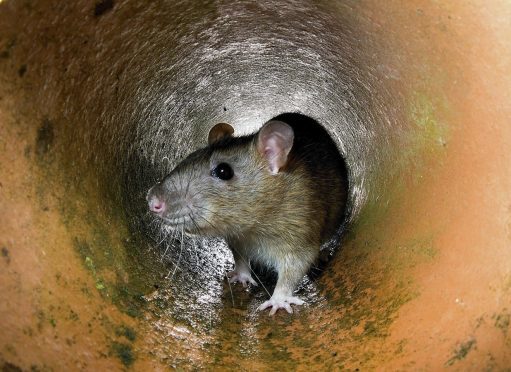A plague of rats in the Western Isles is being blamed on the success of a £5 million cull to eradicate alien mink.
Rodent numbers have exploded in the recent years with the vermin crawling into people’s lofts and living rooms.
This week a primary school in Lewis was closed after rats got inside the building.
Western Isles Council acted swiftly to give the premises a deep clean so children could return to lessons.
But the local authority itself has been hit with parts of its central Stornoway headquarters having been affected by rats from a nearby field, said a councillor.
Mink first found its way into the islands’ environment in the 1960s and 70s, as refugee from fur farms.
Numbers of the escapees boomed and threatened the area’s biodiversity by eating nesting wader birds’ eggs and preying on local wildlife.
In recent years 2,200 mink have been trapped and removed from Lewis and Harris and Uist in a Scottish Natural Heritage sponsored scheme which islanders say co-incides with expanding rat numbers.
Kenny Morrison of Kyles Scalpay in Harris had his Citroen Berlingo van written off after rats gnawed the electrics and insulation.
He said: “The rat problem is horrendous. It is really bad. The rats go into houses and old folk are terrified when they hear them.”
“My van was a write-off – the rats don’t leave a thing and I’ve noticed they are bigger in size this year.”
Public agencies should underwrite a cull of rats to protect human health, he says.
In South Harris, fishermen have found a solution to a rat infestation by adopting a colony of feral cats which keeps the vermin numbers in check around Leverburgh pier.
Up in neighbouring Lewis, Iona Mackenzie said: “Local speculation is the rat problem is caused by the reduction in the number of mink and it co-incides with the timescale.
“I’m not saying mink should not have been eradicated but something needs to be done to balance it out.”
But David Maclennan, SNH’s Outer Hebrides’ manager, said that even at their “absolute height, there were not enough mink to make a major impact on the rat population.”
He added: “Rats have been here for thousands of years and their populations fluctuate naturally.”
“In the last couple of years there has been a high density of rats in some parts of the islands which is of obvious concern to local communities.
“It is not just as simple as putting down poison and traps. People should consider the environment around their area and make sure it is not attractive for rats to live and thrive in,” said Mr Maclennan.
